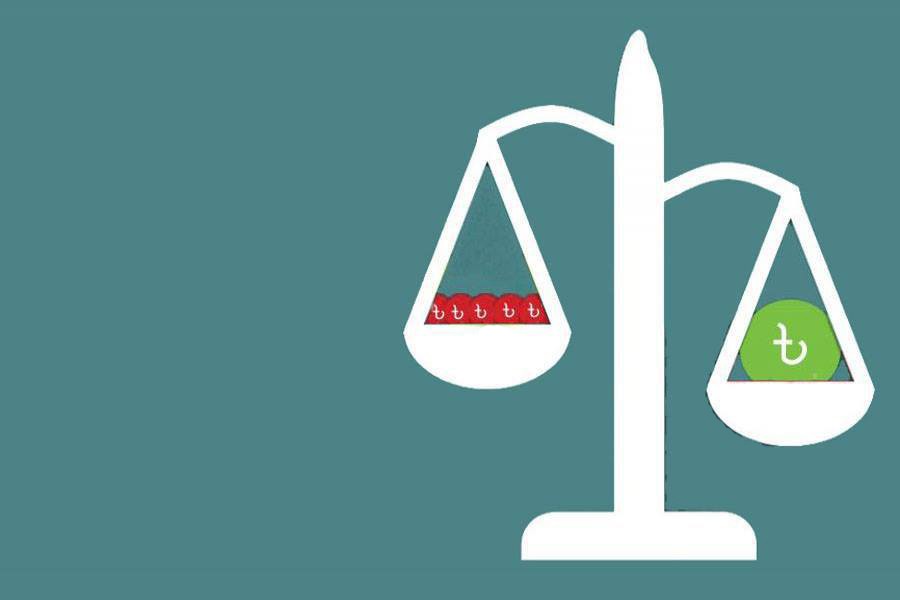Bangladesh is far from reducing inequality as its disparities in social and economic sectors are growing, finds a report on a Sustainable Development Goal (SDG).
Even after four years of the SDGs implementation, the country's different indicators under the SDG 10 are found to be poor, undermining the motto of "Leave no one behind."
A recent government SDG progress report showed that although some goals are on track to be achieved by 2030, the progress in making a dent in inequalities is far from satisfactory.
The General Economics Division (GED) has recently published the SDG Bangladesh Progress Report 2020.
When the Millennium Development Goals (MDGs) ended in 2015, the United Nations had set 17 SDGs for its member countries to achieve by 2030 when the global poverty and hunger rates should be reduced to zero.
Analysts say the rich have gained most from Bangladesh's development for the past few decades and this has triggered inequality in the country.
The report said, "Although Bangladesh is richer than ever before today, about 40 million people still live in poverty."
The richest 5.0 per cent of the households gets nearly 28 per cent of the total Bangladesh's income, while the bottom 5.0 per cent of the households gets only 0.23 per cent, the report said.
The share of the country's middle 50 per cent in the income distribution is relatively stable, while the poorest 40 per cent loses in terms of income share and the richest 10 per cent gains, the report stated.
"The income inequality is much higher than the consumption inequality and the ratio of income inequality to consumptions inequality is rising," the GED report said.
It added that the inequalities in education, health and other basic services are related to income and wealth.
For example, the percentage of under-5 child malnutrition rate among the poorest quintile is 45 while among the richest is 17.4.
The infant mortality rate among the poorest quintile is 43 per cent, under-5 child mortality rate 53, total fertility rate 2.8, percent of teenage mothers 41.1, women receiving antenatal care from medically trained providers 35.6 per cent while that among the richest are 24, 30, 2.0, 22.9, and 90 respectively.
Besides, the percentage of women delivered in a health facility among the poorest quintile is only 14.9, educational attainment of the male household population (more than secondary) 2.0, and educational attainment of the female household population (more than secondary) is 1.1 while that among the richest population are 70.2, 31, and 21.2.
From the financial soundness indicators perspective, the SDG progress report showed a poor achievement too in Bangladesh.
Among the indicators, it showed that the non-performing loan to total gross loan rose to 9.89 in 2018 from that of the 8.40 in the base year 2015.
Economist Dr Ahsan H Mansur told the FE that the state of Bangladesh's inequality was so bad that the SDG 10 achievement by 2030 is difficult.
"Bangladesh's productivity has decreased, the source of income becomes uneven, un-earned cash flow has risen, budgetary investment to total social protection minus public servant pension has fallen, and faulty tax policy kept the rich people out of taxes. Under this circumstance, reduced inequality is not possible here," he said.
The present government's policies and actions are helping the rich people become the richest and the poor people to fall into the perpetual poverty trap, said Dr Mansur, executive director of the local think-tank Policy Research Institute.
Acknowledging the challenges, GED member Professor Shamlul Alam told the FE that since Bangladesh's progress was not so good in this category, it needs to take some special measures in the upcoming 8th five-year plan (FYP) for reducing the inequality.


